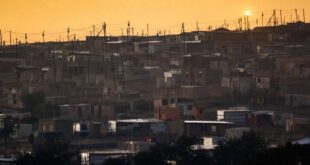A picture is worth a thousand words. But the British Royal Family received many more than it perhaps bargained for when it released a now-discredited photo of Catherine, Princess of Wales and her children to mark Mother’s Day in Britain. Kate later apologized for any confusion, saying that the family portrait had been subject to “editing,” after international news organizations and photo agencies took the rare step to remove the image from distribution, with some such as the Associated Press citing its violation with their editorial standards. The imaging team at The Guardian newspaper identified 20 anomalies in the photo, which it suggests was created with “multiple frames” that “were likely used to composite a more intended final result.”
The Royal Family couldn’t have manufactured—or, rather photoshopped—a worse outcome. For weeks, speculation about the whereabouts and overall health of the Princess of Wales, who has been taking time off from her royal duties following an abdominal surgery in January, has run rampant on social media. Though Kensington Palace issued statements slapping down some of the more serious allegations (one, presented by a Spanish journalist, suggested that Kate was in a medically-induced coma), it has mostly remained silent—until Sunday, when it posted the photo of Kate and her children, purportedly taken by Prince William, to its account on X, formerly known as Twitter, and Instagram. But rather than support the palace’s reassurances that the princess is doing well, it achieved just the opposite, sending the online rumor- and conspiracy-mill into overdrive.
Read More: The Kate Middleton Photo Controversy Shows the Royal PR Team Is Out of Its Depth
This controversy stands to have repercussions for more than the Royal Family’s reputation (or that of Kate’s photoshop skills). More concerningly, it stands to undermine the press and the wider public’s trust in the Royal Family—an institution that, as the late Queen Elizabeth II said, must be “seen to be believed.” This crisis now prompts many to question whether they can still believe what they’re seeing.
Until Sunday, Kate and William had long been regarded as relatively competent users of social media. By regularly posting family portraits taken by Kate, a self-styled amateur photographer, the couple were able to carefully curate their public image in a way that previous royals, whose images were more traditionally mediated through the press, could not. These images not only gave the Wales family an air of authenticity and relative normalcy, but it also made them more accessible to the online public. But social media has also opened them up to more scrutiny.
“I don’t think it’s any surprise that the discrepancies in the photograph were first identified by ordinary social media users,” says Ed Owens, a royal historian and the author of After Elizabeth: Can the Monarchy Save Itself? “It was always going to be pored over and carefully analyzed given the rumors and speculation that‘s been circulating and mounting regarding Kate’s illness and her absence.”
Read More: A Timeline of Recent Events Involving Kate Middleton and the Royal Family
In other words, this was the photo that the palace had to get right. That they didn’t has not only threatened to undermine the legitimacy of their communications in the international press (CNN has stated that it will be “reviewing all handout photos previously provided by Kensington Palace”), but has also tested the deference of the British press. Until recently, the British papers had treated the story with kid gloves, opting against publishing a recent paparazzi photo of Kate circulating in the U.S. press (a policy that dates back to the death of Princess Diana).
For the royal press pack, the admission that the photo had been tampered with “represented an opportunity to explore this story and to ask difficult questions that so far haven’t been asked about what exactly happened to [Kate],” says Owens. Indeed, many tabloids have the photo controversy leading their Tuesday front pages, with the Daily Mirror dubbing it a “PICTURE OF CHAOS” and the Daily Mail dubbing it “A PR DISASTER.” Only The Sun appeared to take a more defensive tone, telling its readers (and all “social media trolls, idiotic conspiracy theorists, and sniping media critics”) to “LAY OFF KATE.”
Some observers are more skeptical that this crisis will have any lasting impact on the Royal Family’s long-standing relationship with the British tabloid press, in large part because it’s so mutually beneficial. “The tabloids understand that they need the Royals to survive and thrive,” says Tessa Dunlop, a British historian and author of Elizabeth and Philip, noting that tabloid print readers tend to lean older, more conservative, and more royalist than those following this story online. Where there has been a notable shift, she says, is that the Royal Family appears more inherently vulnerable, having lost so many key players (namely, the late Queen and Prince Harry and Meghan). And the working royals who remain may not necessarily want to be as visible as they once were.
“This unspoken agreement between the press and royalty is that it’s the royals’ duty to go out and be seen and the press’s duty to catch them going out and being seen,” Dunlop says. “But what happens if one half of the equation is suddenly wanting to reexamine the rules?” Whereas the British press might have once been able to compel the Queen to address the public in the wake of Princess Diana’s death, for example, this new generation of royals has proven less amenable to being pressured into action—whether it’s showing up to a World Cup final or, in this case, releasing an unedited photograph.
But for all the relative deference the British press has toward Will and Kate as the future king and queen (certainly relative to Prince Harry and Meghan Markle, who received no such courtesy), even they have begun to express some frustrations with with the lack of transparency surrounding Kate’s health and whereabouts relative to that shown by King Charles III, who publicized his cancer diagnosis last month. That frustration was perhaps epitomized by British broadcaster and avowed monarchist Piers Morgan, who urged the royal family to “come clean” in a recent op-ed. “The demand of yesterday that the real photograph be published fits into this desire on the part of the traditional media to know more,” says Owens, “to give their viewers, their readers, their listeners more.”
Read More: Kate Middleton’s Mother’s Day Pic Is Not the First Royal Family Photo to Come Under Scrutiny
Kate would hardly be the first royal to experiment with photo editing—indeed, composite portraits and photo retouching date back centuries. But in a world that is increasingly wary of deepfakes and AI-driven disinformation, the manipulation of any image can raise suspicions and scrutiny—especially if its source is an institution that positions itself as an upholder of national identity, values, and pride. The Royal Family cannot afford to be reckless—or worse, to no longer be seen as credible. In the eyes of the international press, it may already be too late.
“In the age of disinformation—and this is disinformation, it’s deliberate misinformation—it’s really important that the media, wherever possible, does take a very, very strict line in terms of the reproduction of images that are true to life, that are real, that haven’t been tampered with because where, otherwise, do you draw the line?” Owens says. “Likewise, the Royal Family need to establish trust with their audience, trust with media organizations, and they’re going to do that by ensuring that any information they put out there is as true to reality as possible.”



